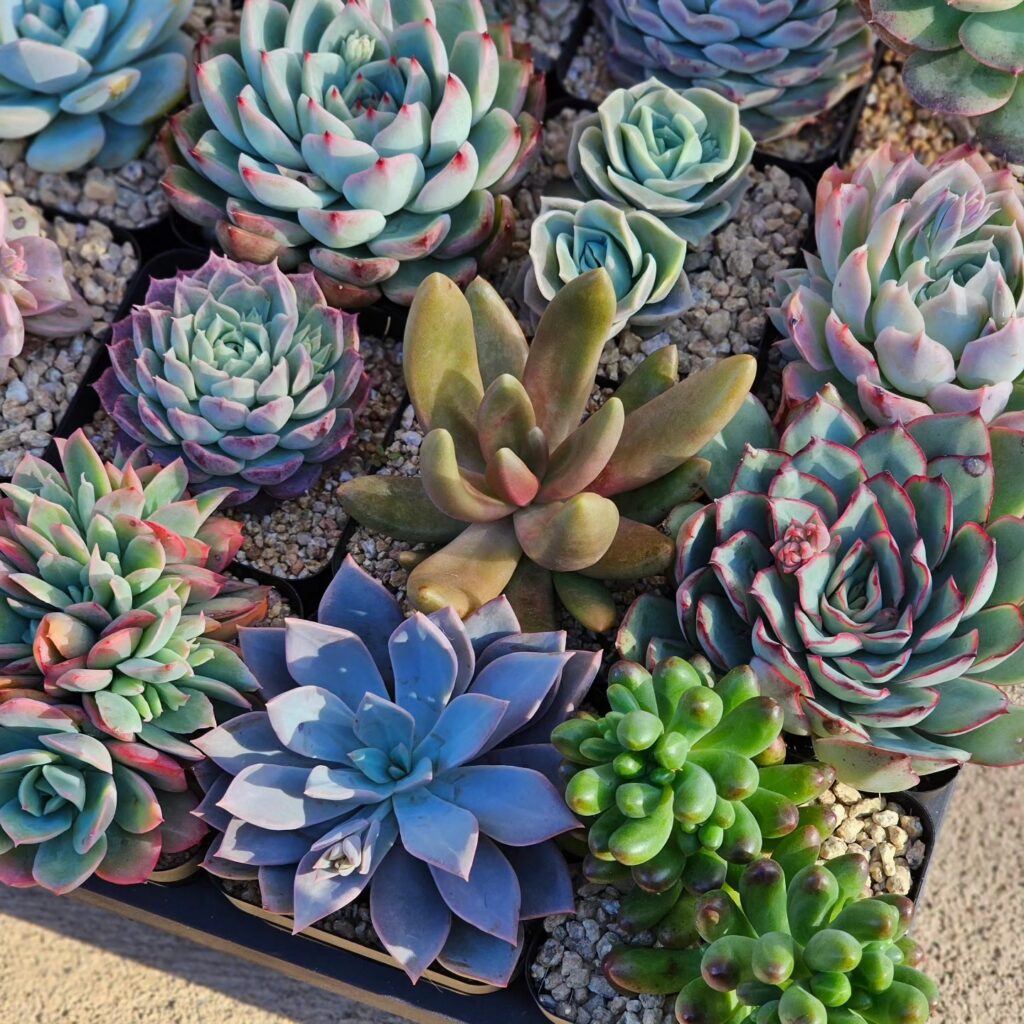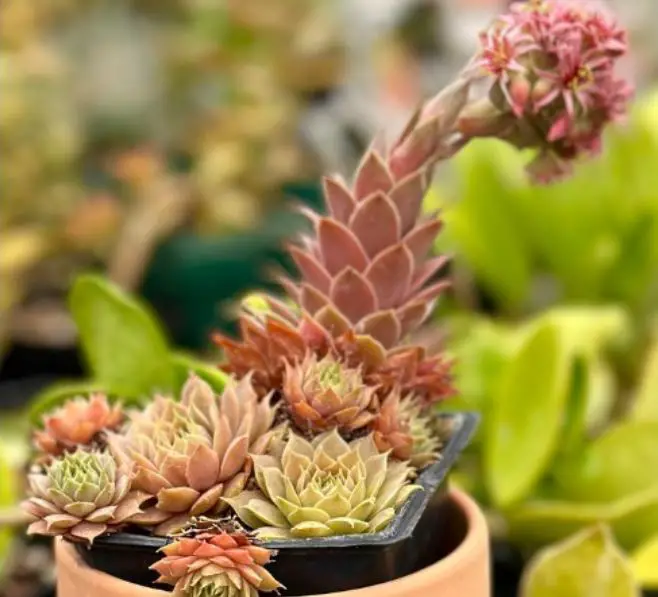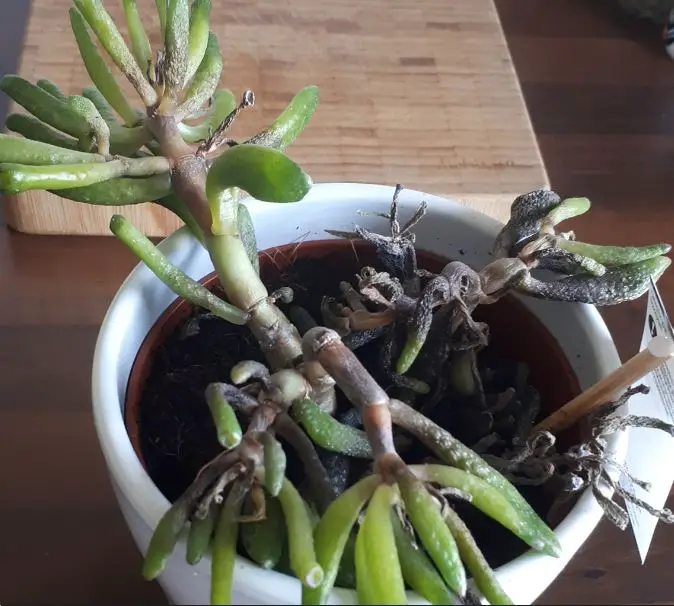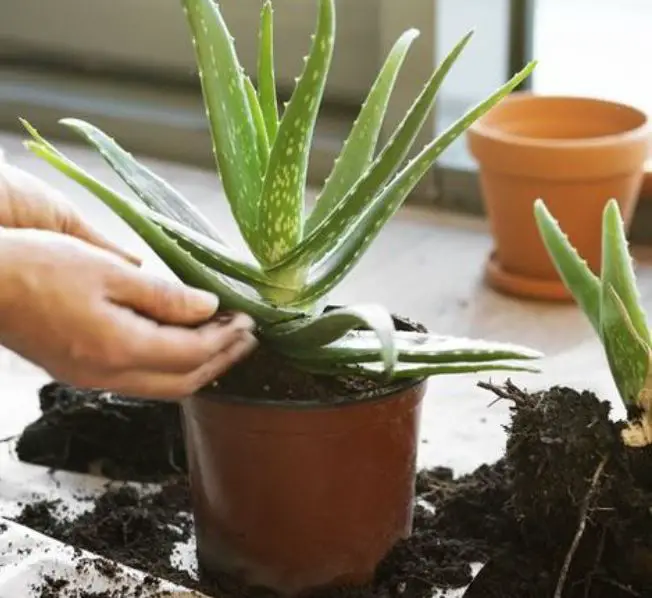Summer vs Winter Succulent Care Routines
Summer and winter seasons come with distinct environmental changes that can affect the health of plants. A shift in temperature, light, and humidity often stresses even the most resilient plants, including cacti and succulents.
Traditionally, summer often brings intense heat and longer daylight hours. On the other hand, winter comes with cooler temperatures, shorter days, and sometimes excessive moisture.
Such changes can cause common issues like sunburn, overwatering, and dormancy-related decline. So, this comprehensive guide explains how to adjust your care routines to ensure your succulents remain vibrant and healthy year-round.
Succulent Care in Summer
Summer is a growth season for most succulents. This is the time they soak up warmth and maximum sunlight. However, excessive heat, strong UV rays, and dry air can pose challenges. Here’s how to optimize care during the warmer months.
Watering
Succulents need less watering even during the summer periods. Wrinkled or shriveled leaves often indicate your succulents need a drink.
Water every 7-10 days, depending on your climate and succulent type. Check the soil to ensure it’s completely dry before watering again.
I prefer using the “soak and dry” technique. Thoroughly water the soil until it drains out the pot’s bottom, then remove it from any standing water.
Water early in the morning to allow for maximum water uptake before the heat peaks. This also reduces the risk of rot that’s associated with evening or night watering.
Light requirements
Succulents love bright light, but intense summer sun can scorch delicate varieties. The damage often appear as brown or white patches on leaves.
So, for outdoor succulents, provide partial shade during the hottest part of the day (midday to early afternoon). Use shade cloth or move pots under trees or awnings.
For indoor succulents, use sheer curtains to diffuse direct sunlight. Rotate pots weekly for even light distribution. You can gradually introduce your succulents to outdoor summer light over 1-2 weeks to prevent sunburn.
Temperature
Most succulents thrive in temperatures between 60-85°F (15-29°C). Summer heatwaves can push temperatures beyond this range, causing stress to plants. Therefore, you need to take measures that can safeguard your succulents when temperatures rise drastically.
Ensure good air circulation around your plants to prevent heat buildup. I always move my potted succulents to cooler spots during extreme heat. You can add a layer of pebbles or gravel around outdoor succulents to cool the soil.
Soil and potting
Summer’s heat can dry out soil quickly. So, check regularly to ensure your succulents are not getting too thirsty. When potting, use well-draining soil. A mix of 50% potting soil, 25% sand, and 25% perlite or pumice works well.
The pot should have drainage holes at the bottom. I prefer terracotta pots because they wick away excess moisture. Generally, poor drainage can cause root rot and other fungal problems.
Pest prevention
Summer’s warmth can attract pests like mealybugs or spider mites. Inspect plants regularly, focusing on leaf undersides and crevices. Treat infestations with neem oil or insecticidal soap. I also use a 70% isopropyl alcohol solution to wipe off insect pests from my succulents.
Fertilization
Early summer is one of the best times to fertilize your succulents. Use a diluted, balanced fertilizer such as 10-10-10 once a month. Always dilute to half-strength or as directed on the product label to avoid overfertilizing or harming the plants.
Succulent Care in Winter
Winter is a dormancy period for many succulents. During this time, growth slows or stops. Cooler temperatures, shorter days, and higher humidity may cause issues like root rot or etiolation. This requires a different care approach.
Watering
Succulents need significantly less watering during winter. Overwatering is a major risk during dormancy, and many die because of root rot. Water every 2-4 weeks, depending on your climate and indoor heating. Always check that the soil is bone-dry before watering.
Water just enough to lightly moisten the soil. Heated indoor environments can dry out soil faster. Monitor humidity and adjust watering accordingly. Soft, mushy, or yellowing leaves signal too much water. If detected, reduce watering and improve drainage.
Light requirements
Shorter days and weaker sunlight can lead to etiolation. Succulents may stretch toward light sources. Therefore, aim to maximize light exposure.
Place your succulent near south-facing windows for maximum sunlight. Supplement with grow lights (10-12 hours daily) if natural light is insufficient. LED grow lights with 6500K color temperature work well.
In mild climates, keep succulents in sunny spots. In colder regions, bring your succulents indoors or use frost cloths for protection. Always remember to rotate indoor succulents every 1-2 weeks to ensure even light exposure.
Temperature
Succulents prefer winter temperatures above 50°F (10°C). Frost can damage or kill most varieties. Keep away from cold drafts, windows, or heating vents. They can cause temperature fluctuations and still damage your plants.
In zones with freezing winters, move potted succulents indoors or to a greenhouse. Hardy varieties like Sempervivum can tolerate cold but benefit from mulch or coverings. Some succulents, like Agave, enter full dormancy.
Soil and potting
Winter’s damp conditions can encourage fungal issues or root rot. Inspect plants for mold or powdery mildew, especially in humid environments. Improve air circulation with fans for indoor succulents and avoid overcrowding pots.
Fertilization
Succulents don’t need nutrients during dormancy. Fertilizing this time is a waste of resources. It can also harm the plant by spiking the salt content in the soil.
Final thought
Adjusting care routines for your succulents during summer and winter periods is essential for their health and longevity. Summer calls for more frequent watering, protection from intense sun, and pest vigilance.
On the other hand, winter demands minimal watering, maximum light, and frost protection. By understanding these seasonal needs and adjusting your care approach, you can keep your succulents thriving year-round.
Tim M Dave is a gardening expert with a passion for houseplants, particularly cacti and succulents. With a degree in plant biology from the University of California, Berkeley, he has vast experience in gardening. Over the years, he has cultivated a vast collection of desert plants and learned a great deal about how to grow and care for these unique companions.






